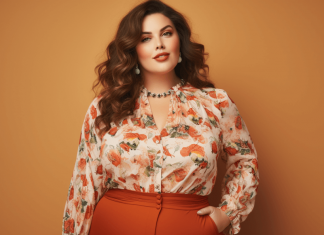
First Published: 1st March 2022, written by Rebecca Munton | Last Updated on 7th December 2023 | Reviewed and Edited by Chloe Safilo
No fashion house has a more enduring tie with underwear than Calvin Klein. Often imitated, never bettered, the undisputed champion of the undies since their first collection launched in 1982.
Although already a big name in fashion, thanks to the success of their womenswear collections and designer jeans in the 1970s, it was the launch of their underwear lines that made Calvin Klein Inc one of the most successful designers in fashion history – and ensured the apparel brand will forever be associated with competing fashion brand designer intimates.
Before the 1980s, for men, underpants were all about practicality. From bland white Y-fronts to baggy boxer shorts, there were a range of styles on the market, but few remain popular today. Advertising campaigns for men’s underwear were designed to appeal to women, since it was wives and girlfriends and mothers who actually bought the products.
An advertisement for Wolsey from the 1970s reads, “It’s amazing how little it takes to change a man.” But this kind of advertising soon seemed reductive compared with Calvin Klein’s fresh take on producing and marketing their undergarments.
Women’s underwear was not much different, functional cotton bras and panties for comfort, with trendy thongs coming initialling in the 70’s and becoming mainstream in the 90’s. Intimate undergarments in the 60’s were nightgowns and peignoir sets
Olympian Underwear
With a fresh, timeless product, and simple, clever ad campaigns with provocative imagery, Calvin Klein single-handedly changed the game by flexing the established rules of men’s underwear marketing. Yes, women traditionally bought men’s undergarments – but that didn’t have to be the case forever.

In their first campaign, Olympic athlete Tom Hintnaus lies back against a wall, his bronzed body glowing in his sun. Front and centre of the photo is Hintnaus’ Calvin Klein underwear. According to Diana Edkins, in an interview with American Photographer, the photo “made men the focal point of sexual attention; for the first time, they were sold as sexual objects, not breadwinners or authority figures.”
The photo presented something new: a marketing campaign that would appeal to both men and women. The undies, really, was neither here nor there – as Klein himself once said, “The only way to advertise is by not focusing on the product.” The photo – and by association, the underwear – gave men permission to want to feel desirable and confident, to embrace their sexuality in a way that would appeal to both themselves, and to their wives and girlfriends. To feel sexy when at their most vulnerable.
And it worked like a charm as retail sales soared with shoppers who bought into the understated luxury of the wardrobe staples designed by one of the biggest fashion houses. It’s well known that your choice of underwear makes or breaks your outfits, but for the first time fashionistas wanted their undergarments to be seen.
Kate Moss & Marky Mark: The Ultimate 90s Duo

Later campaigns, such as the famous 90s advertisements featuring Kate Moss and Mark Wahlberg, showcased further unique aspects of Calvin Klein underwear collection that would soon be mimicked by every other fashion house and designer.
The jacquard waistband bore a logo that could be seen above the waistband of jeans – which were, incidentally, another of Calvin Klein’s most successful products up to that point. The branded underwear was worn to be seen, using the big stars of the time to garner more attention.
Not only that, but now women’s and men’s underwear could be created and advertised together. Only the cut differentiated the styles aimed at each gender – both featured the same fabric, details, simple elastic waistband and neutral colour palette. They aimed to present the genders as equals: flesh was on show, always, but both his models showed skin in more or less equal measure.
The Calvin Klein underwear revolution was about more than just marketing, although it’s difficult to overstate just how transformative and trailblazing these early campaigns were.
Even now, almost every designer of men’s underwear mimics the original CK design in some way. Most brands feature their logo on the waistband of the men’s boxers Briefs. Jersey shorts have seen a boom in popularity. The elasticated jacquard material waistband remains a practical, popular underclothes solution. And for women essential women’s monogram bralettes, available for all sizes and weight.
In Your Feelings
Much of the success stems from how they make the wearer feel. Even today, almost 40 years after the Tom Hintnaus campaign, Calvin Klein is the most recognisable premium underwear brand you can buy. The simplicity of the design appeals to people from a huge variety of subcultures and clans, from modern metrosexual male to high fashion follower to confident jack-the-lad.
Even men who aren’t wearing CK underwear are likely to be wearing a Calvin Klein pastiche. Wearing their underwear tells others you have confidence, that you’re desirable – that you take pride in your appearance. Wearing Calvin’s under inexpensive high-street-brand jeans can give you greater status than wearing designer outerwear. That’s the power of the Calvin Klein underwear brand and the iconic logo waistband.

As a result, they sparked a huge change in the way underwear was considered by the fashion world – rather than a practical garment to be hidden by your regular clothes, it became the foundation for your outfit. The reason you’d choose to wear a certain pair of jeans. The cornerstone of confidence.
Modernising Underwear Marketing
Recent Calvin Klein underwear campaigns have incorporated more modern marketing techniques – featuring a heady list of influencers, their #MyCalvins campaign recreated the success of earlier campaigns for the Instagram generation. The underwear is essentially the same as it has always been – although their colour palette has expanded somewhat, the linchpin of their product will always be the classic black-and-white jersey shorts.
But despite the time shift, so many elements of their original campaigns still work – the influence brought by hiring big-name models, the simple greyscale photography, and the use of a tagline that appeals to a generation.
Calvin Klein didn’t just revolutionise underwear – they changed fashion marketing and design forever. They pioneered a total mindset change in the fashion industry – something upcoming clothing designers should strive to achieve in order to become an enduring fashion force.
Who is Fashion Designer Calvin Klein?
Calvin Klein was born in 1942 in the Bronx, New York, to a Jewish family. His life has parallels with fellow fashion design alumnus Ralph Lauren (born 1939 also in the Bronx to Jewish parents).
Klein attended the High School of Art and Design in Manhattan and New York’s Fashion Institute of Technology. At 20 he began a couture apprenticeship at Dan Millstein, a high-end suit and coat manufacturer in New York. A few years later met his mentor Baron de Gunzburg, who as editor of Vogue opened doors into the Fashion Industry for the budding designer.

In 1971 Klein expanded into Sportswear, Blazers, and Lingerie to critical acclaim and they signed licenses for scarves, shoes, belts, furs, sunglasses, bedsheets, cosmetics, jeans, and menswear. Calvin Klein jeans in the mid-’70s kick-started the designer jeans craze and claimed they sold 200’000 pairs in the first week.
Since 2002 CK has been owned by PVH (Phillips van Heusen group), and continue to manufacturer wardrobe essentials with unbeatable quality and a superior fit, from iconic denim jeans, sleek dresses, sensual bikinis and loungewear ranges, cool trainers and high heels.
The birth of the designer label
Jeffery banks, a design assistant for Calvin Klein claimed credit for first putting the iconic logo on the garments, saying that for a present for Klein he silkscreened the logo onto a T-shirt. Schwartz then created similar t-shirts for his fashion runway staff and this led to a demand to be added to collections.
From the success of designer jeans, Calvin Klein’s take on underwear changed consumer demand from plain packs of three white briefs, to the branded colourways we see today

















































